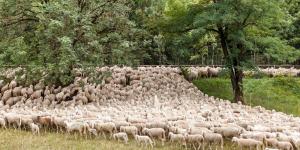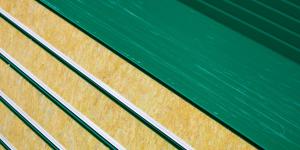Ecology
Explore in-depth ecology insights on ecosystem formation, biodiversity protection, and human impact. Uncover ecological challenges with evidence-based articles.
54 articles

Updated
Updated
Renewable energy is energy derived from renewable resources that are naturally renewed within a specified period of time. For an energy source to be considered renewable, it must be renewed faster than it is consumed. This includes sources such as sunlight, wind, the movement of water, and geothermal heat....

Updated
Updated
Despite the fact most of us will write more on our phone than a piece of paper, our consumption of the material has not waned. In fact, our use of paper continues to grow, with projections suggesting we will be using as much as 476 million tones by 2032[1]. Although paper product packaging is often...

Think about the distinct way different books feel when you hold them. The paper used for a book has a big impact on how we read, from the crisp, clear pages of a brand-new hardcover to the soft give of a paperback. The story of paper in book production began in ancient China, where it started to take the...

Have you ever read the warning label on your bathroom cleaner? The one that says "harmful if swallowed" or "avoid contact with skin". Commercial cleaners might get the job done, but they often contain harsh chemicals that can harm our families' health and the environment. From production to disposal, these...

Those small recycling symbols found on plastic bottles, packaging, and containers serve a crucial purpose: they indicate the material composition and provide guidance for proper disposal and recycling. While these markings are essential for waste reduction, the variety of recycling codes can often lead to...

The circular economy is a business model which seeks to modify the dominant systems of resource production and consumption in a way which minimizes waste by re-entering materials into said systems for as long as possible. Not all materials can be reused, repaired or recycled, but those that can are put to use...

Every year, the world consumes over 5 trillion plastic bags, that's nearly 10 million bags every minute. These seemingly convenient items have become one of our environment's most persistent threats, leaving a trail of destruction that spans from our neighborhoods to the deepest ocean trenches. While a...

Transhumance is an ancient practice where livestock are moved between different grazing areas based on seasonal changes, optimizing natural resources and promoting sustainability. This practice, found in various regions around the world, offers numerous benefits, from preserving biodiversity to boosting...

Understanding how waste is classified is essential for proper handling and disposal in our modern world. Every day, homes, businesses, hospitals, and industries generate different types of waste, each requiring specific handling methods. Whether it's the food scraps from your kitchen, chemical waste from...

Looking for creative, budget-friendly Christmas decorations that bring natural charm to your home? Pinecones offer the perfect solution! These versatile natural treasures can be transformed into stunning holiday decorations that complement any decor style, from rustic to elegant.
In this article by thedailyECO,...

Energy is a core principle in science, essential for understanding how the world operates. It exists in various forms, including kinetic, potential, thermal, chemical, and electrical, among others. These forms are interconnected, with energy constantly transforming from one type to another. This interplay of...

The formation of coal is one of Earth's most extraordinary natural processes, where ancient plant material undergoes a dramatic transformation over millions of years, evolving into a vital energy resource. This fossil fuel, a cornerstone of industrial development since the 18th century, remains a significant...

Renewable energy sources are forms of energy which can be replaced naturally within a reasonable period of time for human use. Sources of such renewable natural energy include the sun, wind and water. This latter category is known as hydropower, harnessing the energy of various water currents to produce...

Hydraulic energy, also known as hydroelectric power, is a renewable energy source generated by harnessing the power of moving water, typically through dams or turbines. As one of the oldest forms of energy production, hydraulic energy plays a vital role in today's global energy mix, providing clean and...

While access to clean water has improved on a global scale, there are still many in the world who do not have easy access to potable water. For this reason, using filtration systems at home can help to purify water and make it safe for drinking. Even those of us who have clean drinking water, the water...

Ecological pyramids are essential tools used in ecology to understand how energy, biomass, and organism numbers are distributed across different trophic levels in an ecosystem. These pyramids graphically represent the flow of energy from producers (like plants) to various levels of consumers and ultimately...

Wood has long been a fundamental resource in human history, serving as a primary material for construction, furniture, paper, and fuel. However, with increasing environmental challenges, the need to conserve and manage this valuable resource has never been more critical. Saving wood not only helps protect...

World Energy Efficiency Day is celebrated every year on the 5th March. While there are different national energy efficiency days or similar initiatives to ensure energy sustainability, World Energy Efficiency Day is a day of global awareness to help various communities protect our planet. Its main objective...

Biodegradable plastics are a type of plastic which is made from a product able to be degraded by living organisms. These organisms are usually in the form of bacteria or other microbes. They are often confused with bioplastics, but this latter term refers to plastics made from renewable biomass sources....

Water from natural sources contains various dissolved and suspended particles that, if consumed, could pose health risks. To make it safe for drinking, this water must undergo a purification process. One of the key steps in this process is sedimentation, where harmful particles settle out, ensuring cleaner...

Methacrylate is a versatile polymer used in a variety of applications, from construction materials to automotive components. Its transparency, durability, and adaptability have made it a staple in many industries. However, like many materials, methacrylate's environmental impact is a growing concern.
In...

Our planet is groaning under the weight of our waste. Landfills are overflowing, plastic is polluting our oceans, and the relentless "buy-use-throw away" cycle is taking its toll on the environment. If you are also feeling overwhelmed by plastic waste and want to make a real difference in reducing your overall...

An increase in industrial waste is due to the increase in population numbers and the anthropogenic activities we collectively carry out. We might not associate our daily consumption as being related to industrial waste, but almost everything we do requires materials which have been produced by industrial...

The majority of the world's waste is generated by humans due to our large population numbers and our current rate of consumption. While each individual creates their own amount of waste, our various industries create amounts of waste that is becoming increasingly problematic. This excessive growth of...

Wind energy has emerged as a leading force in the renewable energy revolution. It harnesses the power of moving air to generate electricity, offering a clean and sustainable alternative to fossil fuels. However, like any technology, wind power comes with its own set of advantages and disadvantages. Evaluating...

In the quest for sustainable and renewable energy sources, biomass energy seems to be a versatile and promising option. Derived from organic materials like plants, agricultural residues, and waste, biomass energy offers the potential to reduce our dependence on fossil fuels and mitigate climate change....

Regenerative farming is a sustainable production practice and philosophy which is applied to the agriculture sector. The guiding principles of regenerative agriculture exist to ensure the conservation and regeneration of ecosystems while still exploiting them to create various types of produce. Traditional...

Far from a mere convenience, clean water is the cornerstone of our existence and well-being. It makes up a staggering 60% of our bodies, playing a vital role in everything from temperature regulation and nutrient transport to lubrication and digestion. Clean water is also essential for hygiene, preventing...

Bioremediation is a form of environmental recovery which involves the use of biological agents. Ecosystems often exist in a delicate balance. One of the biggest threats to upsetting this balance is human industry. Industrial manufacture, the building of infrastructure, farming and other process release...

High above us lies a vital yet invisible shield: the ozone layer. This region of the stratosphere (upper atmosphere) is enriched with ozone (O3) molecules, which play a critical role in protecting life on Earth. Let's delve into the science behind this protective layer. Without the ozone layer, life...

Integral ecology is an emergent approach to ecological study that transcends the limitations of traditional perspectives. It does so by addressing environmental and social challenges from a holistic vision. This means approaching the study of natural systems from a perspective that considers its interconnectedness,...

Although the basic practice has been carried out for centuries, the concept of agroforestry was only formally conceptualized in the 1960s. The practice is a type of land management system whereby trees are planted near crops or land for pasture on various types of farm. There are many purposes for this...

Plastics have made our lives better in many ways. But behind their versatility lies a complex reality. From fossil fuel extraction and production to pollution and waste, their environmental footprint is undeniable. This is why understanding the different types of plastics and their environmental impact is...

Towering over the world, Mount Everest beckons adventurers with its awe-inspiring heights. Yet, beneath the majesty lies a growing problem: climber waste pollution. Every year, hundreds of individuals attempt to conquer the peak, leaving behind a trail of discarded tents, oxygen canisters, food packaging,...

In today's energy-conscious world, understanding power consumption is crucial for both individuals and society as a whole. Electricity generation, distribution, and consumption have a significant impact on the environment, contributing to greenhouse gas emissions and air pollution. By identifying appliances...

Twice a year, many of us adjust our clocks, either springing forward or falling back. This peculiar tradition, known as Daylight Saving Time, has been around for over a century. The biannual ritual raises questions about its origins, purpose, and the impact it has on our lives.
The following article...

Radioactive waste is any material that contains radioactive substances. These substances are unstable and can emit harmful radiation. Radioactive waste can be produced from a variety of sources, including nuclear power plants, nuclear weapons production, and medical procedures. Radioactive waste is a serious...

In recent years, biomethane has been gaining popularity as a sustainable energy source. Biomethane's significance lies in its ability to combat climate change by capturing methane emissions, a potent greenhouse gas. Derived from organic waste materials, it not only addresses waste management challenges...

Also known as sustainable or environmental biotechnology, green biotechnology is a branch of science that uses living organisms to develop sustainable and environmentally friendly solutions. This has been used in agricultural processes, producing improvements in the competitiveness of the agricultural, livestock...

Cross ventilation is a term widely used in architecture and structural engineering. It is especially important when devising air conditioning systems for various buildings, including residential homes. There are different methods of ventilating a home which are largely dependent on the methods of wind...

Biodigesters are a technology that makes it possible to give organic matter a second chance to generate renewable energy as well as create natural fertilizers. The function of biodigesters is based on the action of microorganisms, especially bacteria. These microorganisms decompose organic matter in the absence...

As summer brings high temperatures, finding ways to cool your house becomes essential. There are several methods to cool your home or a room without relying solely on air conditioning. From cross ventilation and the use of fans to thermal blinds, insulation, and the strategic placement of plants, we...

The term ‘blue economy’ was originated by the Belgian economist Gunter Pauli in his book titled The Blue Economy. This book was published in 2012 and is an outline for a business model which incorporates ocean conservation into economic development. This term defines an economy that makes responsible...

The differences between organic and natural foods are not just related to marketing. As many people want to eat healthily, many commercial food companies want to give the impression their food is good for our health. They do so with green packaging, bucolic scenes of cornucopias or even the terminology...

Autecology and synecology are two of the approaches which can be taken to understand the larger discipline of ecology as a whole. Ecology is the study of communities of organisms, the ecosystems they inhabit and the relationships between species of organisms in a given environment. It is a very broad...

Thermal insulation is a method of reducing heat transfer and energy loss in buildings. This reduction in energy loss is facilitated by different materials which have insulating properties, although this is not the only property they need to be effective in construction of various buildings. Some examples...

Air, the life-sustaining substance that surrounds us, is often taken for granted. We breathe it in without much thought, unaware of its profound significance for all living beings. While oxygen is the most recognized component of air, there are numerous other gases and compounds within it that play crucial...

Natural gas is a versatile energy resource that plays a crucial role in meeting the world's energy demands. Derived from deep within the Earth, natural gas has become a significant player in various sectors, from residential heating to electricity generation and industrial processes. One such question revolves...

Although you may not have heard of them before, sandwich panels are types of construction material that have been around in since at least the 1940s. Their popularity and use has increased exponentially since then, now being one of the most used materials for buildings and other construction projects....

Recycling organic waste is crucial for environmental sustainability. Organic waste refers to the biodegradable materials that decompose naturally, such as food waste and yard trimmings. When these materials are sent to landfills, they are buried and unable to decompose properly due to poor ventilation, temperature,...
